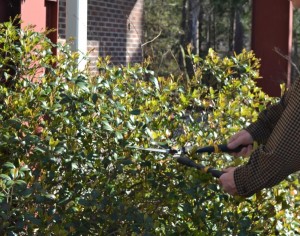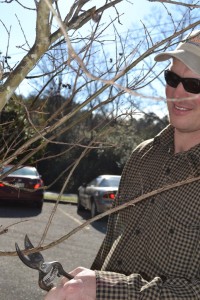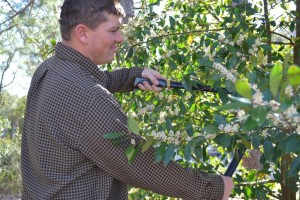by Blake Thaxton | Mar 13, 2013
Many landscape managers and home owners, especially on the gulf coast, wants to add the tropical feel to their landscape. The chief way to achieve this is by incorporating Palms and other tropical plants to their surroundings. Like with any other plant one would like to care for it properly. The improper care of Palms, I would like to blame on simple lack of “know how” and nothing else. Some palm care practices are a real problem in Northwest Florida; whether it is pruning, installing, or fertilizing. University of Florida has some great resources available on Palm care and maintenance. Let’s hit some highlights and use these tips to improve Palm care in northwest Florida.

First, installation is very important with Palms, as it is with all plants. One practice that ultimately results in death to a Palm is planting too deeply. Some have done this in the past to help secure the Palm from falling over. This may seem like a good idea but will harm the plant in many ways. Look at these two palms that were planted at the same time, see the difference?

Make sure when your planting to dig the hole twice as wide as the rootball and only as deep as the rootball is tall. Then for support build a supporting structure, but do not nail directly into the trunk (this will allow an entry point for disease). Once planted, water the palm in thoroughly, allowing for all the air pockets to be compromised If the fronds are tied up, untie them as soon as your palm is planted.

The next issue that faces palm lovers is pruning palms. Many prune a palm too much for a variety of reasons. Take a look at this palm for an example of a palm that has been pruned too much.

Follow the 9 to 3 clock rule, only pruning above the horizontal line of the crown of the palm. If you follow this rule you will generally be pruning correctly.

Read more about pruning, installing and general palm information for northwest Florida.
Photo Credits, University of Florida.
by Eddie Powell | Feb 15, 2013

As spring approaches, many gardeners get out the pruning shears and prune everything in sight. That might not be the best course of action! Take a look at these tips for flowering landscape shrubs to learn more about pruning techniques that will maximize amount of bloom.
Why Prune?
• Control plant size or form
• Remove damage (mechanical, disease, etc.)
• Prevent potential damage (overlapping branches, poor crotch angles, diseases, etc.
• Stimulate new growth (rejuvenate old plants, fill bare areas, increase flowering, etc.)
When to prune:
• Corrective pruning due to injury or dead tissue should be done as soon as evident.
• Avoid pruning from August 15 until plants are dormant.
• Most pruning should be done during the dormant season or immediately after flowering.
Rules of thumb:
• The “May Rule”.
• May defined if the plant blooms before May 1, prune immediately after flowering has ended (flowers produced on old wood or last year’s growth: Azaleas, Forsythia, etc.)
• If the plant blooms after May 1, prune during the dormant season (flowers produced on new growth: Crape Myrtles, Lilac Chaste tree, etc.).
• As with any rule there are exceptions: Oak leaf Hydrangea.
General rules of Pruning:
• Local in affect (usually within 6” of cut).
• Cuts should be made ¼” above a bud or to a crotch (Lateral branch).
• Cuts should be made at angles.
Pruning Equipment: (Make sure blades are sharp)
• Hand Snips (for small branches)
• Loppers (branches > 0.75” in diameter)
• Pruning Saw (limbs > 1.5” in diameter)
• Shears (for a more formal look)
• Pruning Knife (for clean-up)
Safe Pruning Principles:
• Keep equipment clean and in good repair.
• Appropriate, properly fitted safety equipment for job (eye and ear protection, no loose fitting clothes, etc.)
• Keep equipment within your control zone. Don’t over extend, know the limitations of your equipment and yourself.
• Know your surroundings (overhead utilities, other workers, etc.).
• Be able to identify Poison Ivy, Poison Oak, and other skin irritants.
Quick Tips to Remember:
• Pruning: Remove dead wood and seed pods annually during the dormant season.
• Size control should be done by cultivar selection, not by pruning.
• To promote a second set of flowers, prune away faded or spent flowers throughout the season.
For more information, click here for a UF / IFAS Extension publication on proper pruning techniques.
If you have any questions contact your local county extension agent.
by Eddie Powell – Walton County Extension Horticulture Agent








